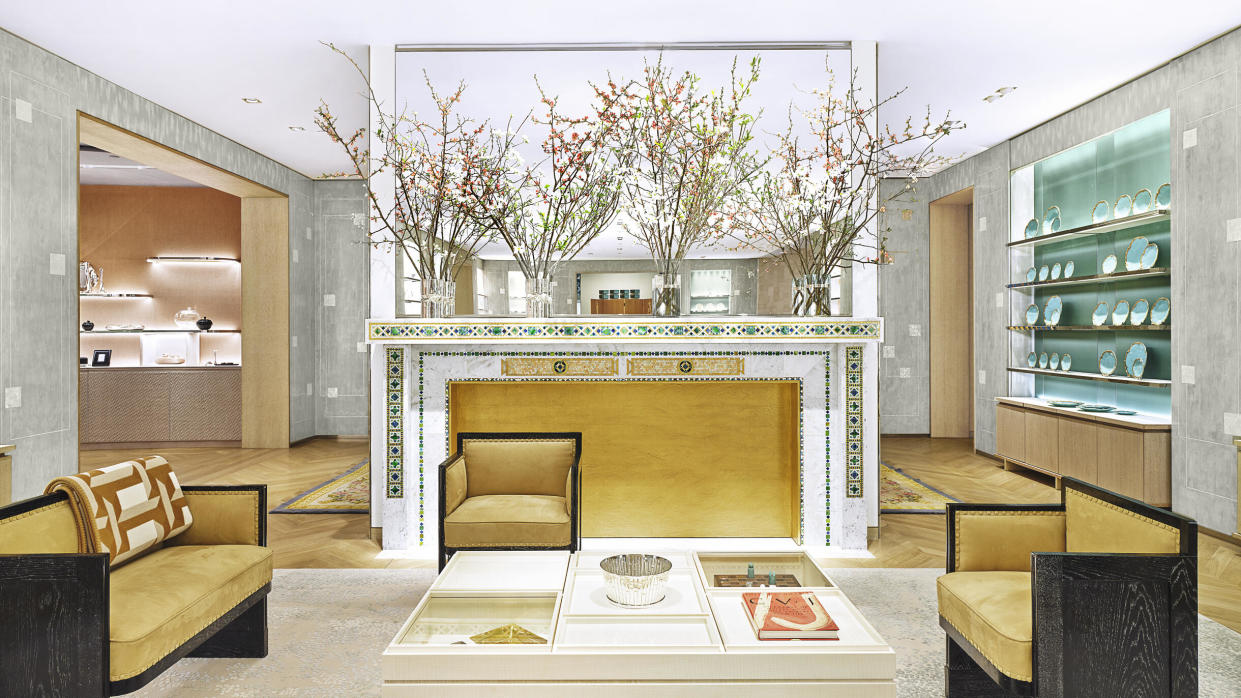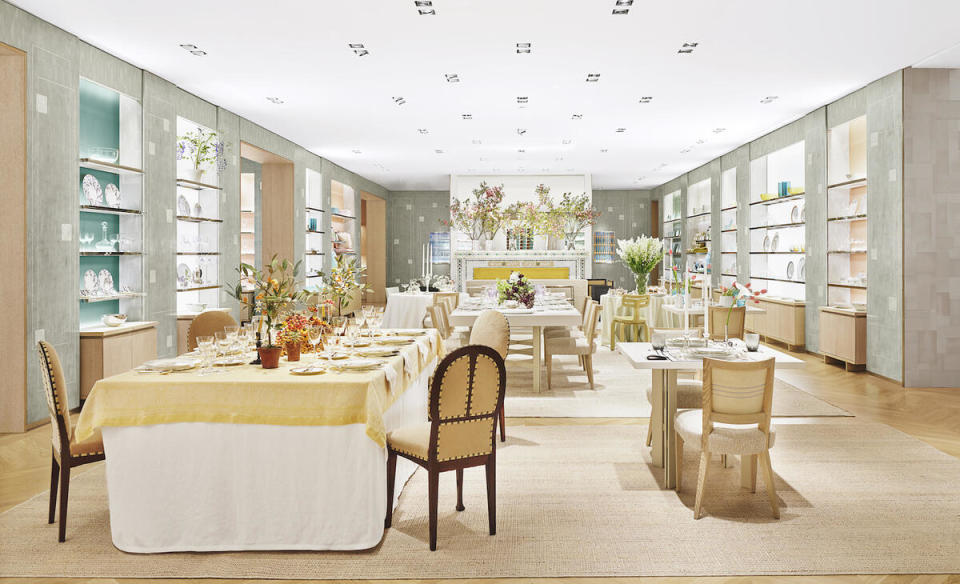3 new stores prove urban retail isn’t dead

Retail Watch | Jun 15, 2023
Amid reports that urban physical retail is dead—or at least dying—three new stores in New York show that not only is it alive, but it’s quite well … as long as that store is distinctive, special and strategically placed.
The recent Manhattan openings of Century 21, Tiffany & Co. and Miniso stores come as Bed Bath & Beyond is in the final stages of closing its former Chelsea flagship, a 100,000-square-foot colossus that was the centerpiece of the entire 1,000-store chain. Also ceasing operations are other retailers like BuyBuy Baby (owned by Bed Bath & Beyond), Party City, Tuesday Morning and David’s Bridal, all of which are closing hundreds of stores both locally and nationwide.
Yet the three newly opened New York stores—Tiffany & Co. and Century 21 are actually reopenings—were all greeted with great fanfare and together represent the ongoing strength of urban retail, despite the doom-and-gloom scenarios being circulated.
Make no mistake: Some urban areas are having real struggles. In San Francisco, downtown locations for Nordstrom, Nordstrom Rack, Whole Foods, Gap and Banana Republic are all closing as that city deals with the impact of remote work on its downtown, homelessness and crime. In Chicago, Walmart has closed half of its small-format Neighborhood Market stores, while Walgreens has also pulled out, again citing crime levels and the difficulties of turning a profit in inner city locations.
But if urban retail is truly having challenges, these new Manhattan stores are not just the exceptions to the rule—they are examples of a different rule: A store that offers a truly differentiated shopping experience can not only exist, but succeed.
Miniso
This chain—launched in China in 2013, but in the American market since 2017 with headquarters in Pasadena, California—opened what it calls its U.S. flagship in the heart of Times Square in May, and it is quite suited for that address. Its less-than-2,000-square-foot space is crammed with more than 2,500 products in what can best be described as a cross between a dollar store and a traditional retailer’s checkout lane—on steroids.
The company says its store is divided into 10 dedicated product zones, including licensed goods like Disney and Hello Kitty, and stretching to collectibles, toys, plushies, fragrances, accessories, makeup tools, snacks, electronics and gifts. Home is represented across several categories, mostly in decor and accessories.
The closest direct American counterpart would be Five Below, but Miniso takes it up several notches with both its merchandise mix and presentation. With this flagship, the brand now has about 70 locations in the U.S., generally along the coasts and into the Sunbelt, and said it expects to hit 100 American stores by the end of this year. Just 10 years old, it already has more than 5,500 stores in more than 100 markets around the world.
This Miniso store—there’s another Manhattan location in SoHo—will no doubt have a heavy tourist appeal, but on opening day there were plenty of locals … and barely anybody older than 25. A public company that trades on the New York Stock Exchange, the retailer had sales last year of just over $1.5 billion.
Century 21
One of New York’s most beloved local retail brands—right up there with Zabar’s, Katz’s Delicatessen and Bergdorf Goodman—the design deep-discounter Century 21 got caught up in a perfect storm of 9/11 emptying out Lower Manhattan, overexpansion and then Covid shutdowns. It closed its beloved flagship opposite the World Trade Center in late 2020, its assets were tossed around and then eventually bought by the original founders, who set about reopening the store at its iconic flagship location this spring.
Both they and their shoppers were not disappointed. Although a bit smaller than its original footprint, the returning Century 21 delivered on its mix of designer brands and off-price merchandise in both apparel and home as much as it had before.
Manhattan does have (more than) its fair share of off-price stores from such national chains as T.J. Maxx, Marshalls, HomeGoods and Burlington, as well as assorted locals, but Century 21 seems to have a merchandising mix that is not duplicated anywhere else. And that’s the secret of why it’s successful. It’s not the displays, the shopping ambiance or any online presence. It’s physical retailing at its most basic: a great assortment at great prices that you won’t find anyplace else.

Tiffany & Co.
Miles away—both geographically and cosmically—from Century 21, the reopened Tiffany & Co. flagship (they now call it “The Landmark” store … even if no one else will) delivers on everything you’d expect from this fabled Blue Box luxury retailer.
Let’s just say it takes the luxury shopping experience to new levels, including extra floors added to the original location, while presenting an exquisitely designed retail environment. There are some famous Tiffany baubles on display around the store—yes, the Tiffany diamond really does exist—as well as original art from the likes of Jean-Michel Basquiat, Julian Schnabel and Damien Hirst … not to mention a lamp or two from the son of the founder, one Louis Comfort Tiffany. While jewelry dominates the merchandising mix, there is an entire floor largely devoted to home products, including tabletop and decorative accessories.
One can quibble about select design decisions, but the store is unlike anything else you’re going to find in modern American retailing.
And that’s what these three physical stores have in common: a differentiation that sets them apart from competitors and offers a compelling reason to come in person to shop. Retail pundits (I think one of my colleagues Steve Dennis may have said it first and best) have endlessly made the case that the country just has too many boring and ultimately bad stores, and that’s the problem with retail today.
Manhattan is no different, and so we’ll continue to see once-very-good stores deteriorate and ultimately close. Ironically, the founders of Bed Bath & Beyond, in taking a cold, detached view of the demise of their creation in a Wall Street Journal interview, said as much: “Plenty of chains have gone out of business.”
But plenty of new stores come along to replace them. The latest Miniso, Century 21 and Tiffany & Co. stores are three of them. There will be more.
____________
Warren Shoulberg is the former editor in chief for several leading B2B publications. He has been a guest lecturer at the Columbia University Graduate School of Business; received honors from the International Furnishings and Design Association and the Fashion Institute of Technology; and been cited by The Wall Street Journal, The New York Times, The Washington Post, CNN and other media as a leading industry expert. His Retail Watch columns offer deep industry insights on major markets and product categories.
Want to stay informed? Sign up for our newsletter, which recaps the week’s stories, and get in-depth industry news and analysis each quarter by subscribing to our print magazine. Join BOH Insider for discounts, workshops and access to special events such as the Future of Home conference.

